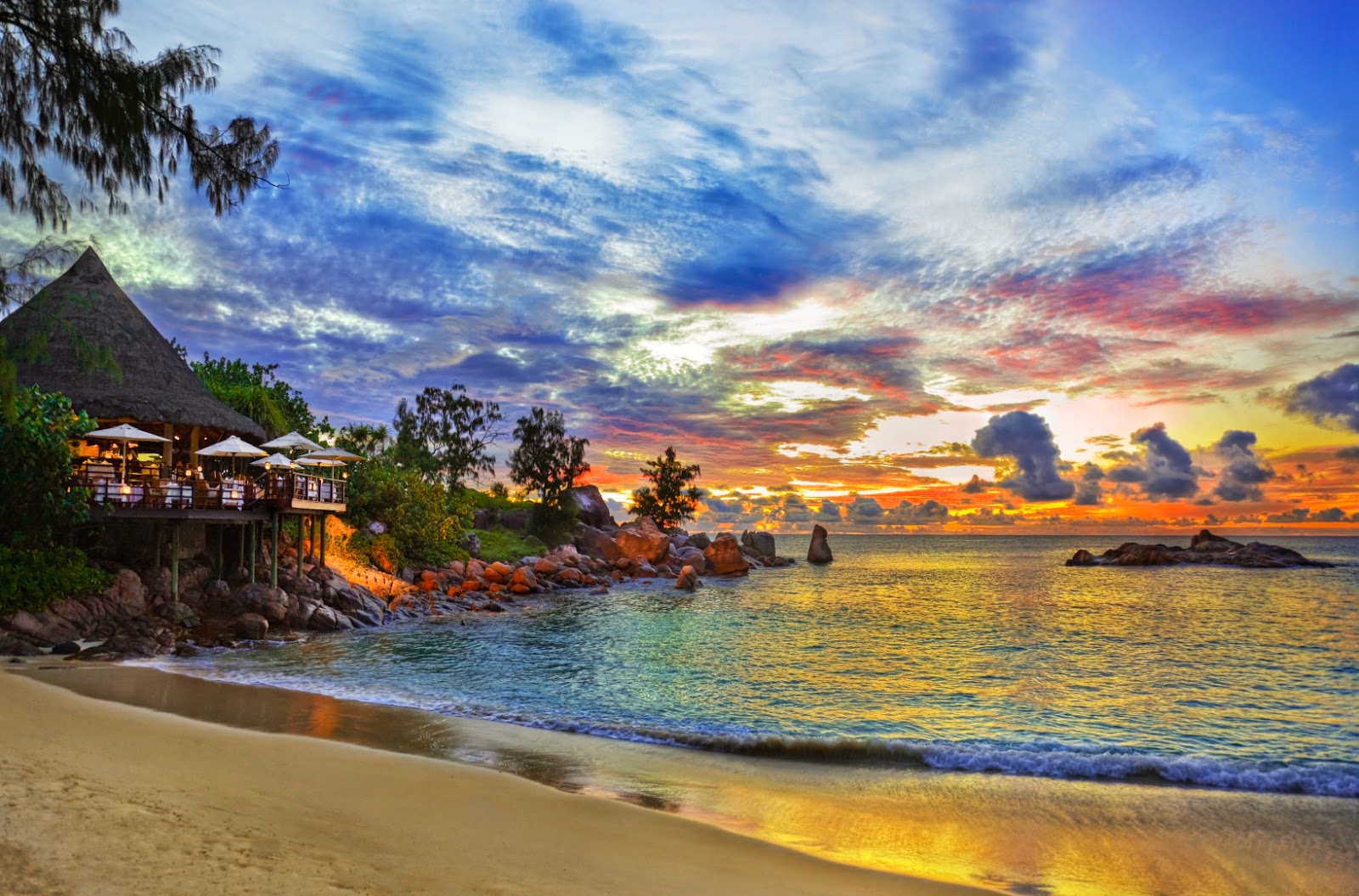Wondering where you can spend your perfect summer vacation of 2015? Go to places you have never been before and experience paradise on earth.
OUR FIRST SUGGESTION IS SEYCHELLES ISLAND
OUR FIRST SUGGESTION IS SEYCHELLES ISLAND
Close your eyes. And just imagine. You're lazing on a
talcum-powder beach lapped by topaz waters and backed by lush hills and big
glacis boulders. Brochure material? No, just routine in the Seychelles. With
such a dreamlike setting, the Seychelles is unsurprisingly a choice place for
newlyweds. But for those looking for more than a suntan or romance, this
archipelago offers a number of high-energy distractions. There are jungle and
coastal walks, boat excursions, and diving and snorkeling to keep you buzzing.
Ecotourism is big – there are marine parks and natural reserves filled with
endemic species that are easy to approach.
The Seychelles is more affordable than you think. On top of
ultra-luxurious options, the country has plenty of self-catering facilities and
family-run guesthouses that offer local colour. So if you are suffering from
visions of tropical paradise, here is your medicine.
A BRIEF HISTORY OF SEYCHELLES
The Seychelles 115 granite and coral island extend from
between 4 and 10 degrees south of the equator and lie between 480km and 1,600km
from the east coast of Africa in the western Indian Ocean.
Of these 115 island, 41 the Inner Island constitute the
oldest mid-oceanic granite island on earth while a further 74 form the 5 groups
of low-lying coral atolls and reef islets that are the Outer Islands.
The Seychelles` climate is always warm and the temperature
rarely drops below 24 degrees C or rises above 32 degrees C.
It is generally cooler from November to March. The sea is
calm and the weather warm and humid. A larger amount of rainfall falls during
the months of December to February. It is also fairly cloudy at times during
those months. The weather is hottest from December to April. The months of May
to October bring drier, cooler weather and livelier seas.
Much of the Seychelles beauty lies in its natural wildlife
untouched for centuries, making the island a sanctuary for many rare and unique
plants and birds. There are 81 unique species of plant life, which can only be
found within the Seychelles.
The legendary Coco-de-Mer coconut is but one such species. This
is the largest coconut in the world that grows only on one island, Praslin,
within the prehistoric forest of Vallee de Mai at the heart of the island.
A BRIEF HISTORY OF SEYCHELLES
The first record of the Seychelles was in 1502, when Portugal`s
Vasco da Gama explored the islands, although Arab traders may have visited them
much earlier. Later on, during the 16th century, the islands were frequented
and some were even named by the Portuguese. In 1742, the French Governor of
Mauritius sent an expedition to the island. A second expedition in 1756 reasserted
formal possession by France and gave the island their present name in honor of
the French finance minister under King Louis XV, Moreau of Seychelles. In 1794
Britain annexed the Seychelles. For the thirteen years which followed the
islands changed hands seven times between the French and the British. In 1811
Seychelles was occupied by the British. In 1814 the Treaty of Paris rendered
both Seychelles and Mauritius formally British. A year later this cession was
sanctioned and the Seychelles became under the dependence of Mauritius. In 1835
Seychelles saw the abolishment of slavery and 1853 the establishment of the
Roman catholic church. In 1888 a separate administrator and executive and administrator
councils were established for the Seychelles archipelago. Nine years later, the
administrator acquired full powers of a British colonial governor, and on 31
August 1903, Seychelles became a separate British Crown Colony.
Seychelles became a sovereign republic on 29 June 1976.
After independence these islands were leased to USA.






















0 comments:
Post a Comment